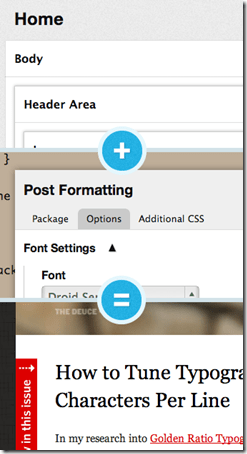We have all heard the old adage “When life gives you lemons, make lemonade” right? I think that more people should focus on creating success than dwelling on misfortune. In the age of entrepreneurship where anybody can take even a mediocre idea and just run with it, we need to learn to turn a deficiency into an opportunity.
Over the past few weeks, I witnessed a situation that made me refocus on this idea. It’s always nice to have a real-world example to punctuate your point. At the beginning of October, DIYThemes, the maker of the WordPress Framework called “Thesis” (which is what I use quite happily on HighTechDad.com and that link is an affiliate link, btw) released a new version of their theme framework called Thesis 2.0. It was a radical rearchitecting of their framework, essentially redesigned from the ground up. It had been talked about for months and, from reviewing it, it was pretty obvious that a lot of thought and work had gone into its design and implementation. I’m actually quite excited about its potential!
DIYThemes did a nice job taking all about the new architecture and framework on their site. Obviously, they were excited to release the new code to their user base. And, they had committed to a release date. The only problem was, they simply put it out there saying, here it is, go at it. There was one thing missing…Documentation.
As the extremely active members of the DIYThemes forum quickly pointed out, this was unacceptable, and I honestly have to agree. While I typically don’t read documentation and simply learn by doing, the changes were radical enough to illustrate the need for some sort of documentation. There was none.
So, the lemons were there. And people were sucking on them and spitting out criticisms of how the release was done. And to make matters worse, one of the founders of DIYThemes, Chris Pearson, simply didn’t handle this lack of documentation well, at least in the opinions of many of the forum members. Honestly, I tried not to follow that drama, but it was hard to avoid the ranting of many on the forums.
There was no documentation at launch – “it is being worked on” – was the response. My personal opinion is that there should have been at least a “cheat sheet” of sorts or even something in the ReadMe that comes with the new framework for people to reference. But no, there wasn’t.
I decided to start making lemonade. I downloaded the new framework, set up some local WordPress installs on my Mac and Windows laptops and just started playing around. That’s how I learn. But I was still hitting the wall not knowing what I was doing. I was operating in a vacuum.
Then, someone set up a lemonade stand.
Matthew Horne over at DIYWPblog.com saw an opportunity and ran with it. He immediately started writing How-To articles on the new theme framework. Having written quite a few How-To’s in the past, I know that these take a lot of time. But Matthew has been cranking them out almost daily. Obviously, as he provides WordPress services as his business, it’s in his best interest to do this. But this is the whole point. While others were complaining, Matthew took the opportunity and capitalized on it.
As of this writing, Matthew has produced about 10 articles that are clearly written with examples and pictures – essentially 3rd Party documentation. For those interested, here’s what he has written about:
- Thesis 2.0 Logo Box
- Thesis 2.0 Getting Started Part 1 – Site Options
- Thesis 2.0 – 2 column Layout
- Thesis 2.0 Getting Started Part 2 – HTML Editor
- Thesis 2.0 – Full width Framework
- Thesis 2.0 Getting Started Part 3 – CSS Editor Overview
- Thesis 2.0 Part 4 – CSS Editor – Single Element Styles
- Thesis 2.0 Guide – All About Columns Galore
- Thesis 2.0 Part 5 – CSS Editor – Links Package Options
- Thesis 2.0 Part 6 – CSS Editor – Menu Package Options
- …and more are promised to be coming!
So, now, instead of going and reading the rants and complaints in the DIYThemes forums, I head over to DIYWPblog to see if a new tutorial has been produced. I read through each and every one and test it out myself.
My point here is not to highlight a bad product rollout, nor criticize or point out how it could have been done better. It’s really all about the lemons and lemonade and seeing an opportunity and turning this opportunity into a success.
When you go about your life, business or personal, take time to see needs and act on them. If something needs to be done, don’t wait until someone asks you, just do it. More often than not, you will be directly or indirectly helping someone as a result of your efforts.
HTD says: When was the last time you made lemonade for someone?







1 comment
Matthew Horne
Thank you for this amazing analogy, It has always been my philosophy that instead of looking for other ways to (in as polite away as possible, Complain) to instead seek the solutions that are viable for us all.